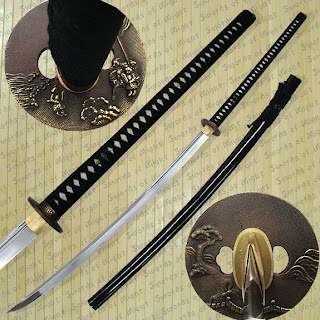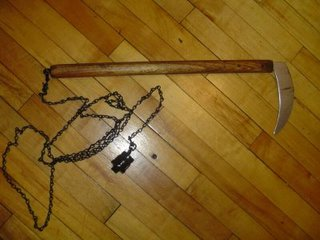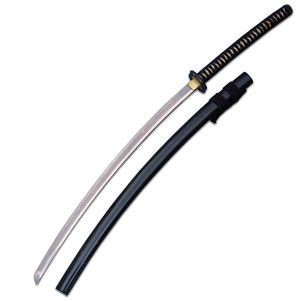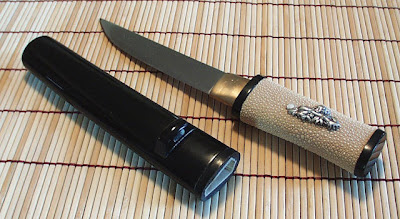When a sword is swung, it is the most important that the biggest power is applied to the kissaki. But, the power sometimes goes into the shoulder when a beginner triest o put the power in the kissaki. A sword isn't swung fast when the power goes into thes houlder. Remove the power of the shoulder and the arm, and swing a sword by thepoint which throws a fishing rod. Swing a sword by a feeling that a kissaki is thrownt owar d the target. Then, stretch both arms enough, and try to draw a big circle. At thistime, the orbit of the sword must always pass through the center of the body. Tighten a little finger and a third finger strongly when swinging down a sword.

After you finish swinging a sword, make the hilt head of the sword come in front ofthe navel. Space between the hilt head and the navel is about one fist. And turn akissaki a little below from the level. Then, bend an elbow a little, and remove the power of the shoulder. And tighten both armpits lightly.
Level (Right)A fundamental principle is the same as "Basic swing". But, a sense is really wrong because it becomes horizontal from the vertical. Therefore, the orbit of the sword deviates easily very much

A point is almost the same as "Basic swing". Therefore, swing it by a feeling that a kissaki is thrown. An attention point is to stretch its right arm firmly. When a right arm bends, a hard
target can be hard to cut with a sword. It is because an elbow becomes a cushion and the power is absorbed.
Level (Left)A sense is a little different from "Level (right)". "Level (left)" becomes the shape which swings a bat easily. Be careful, because "Hasuji" deviates when swing becomes the
hape which swings a bat.

A point is almost the same as "Basic swing". Therefore, swing it by a feeling that a
kissaki is thrown.
An attention point is to stretch left arm firmly. Be careful that an elbow must not bend
because an elbow bends easily when "Level (left)" is done.
Kesa Right"Kesa" is the clothes of the Japanese priest. It is the rectangular cloth to put on the
right shoulder from the left armpit.
Therefore, it is said as "Kesagiri" that it is cut with the sword from an enemy's
shoulder to the armpit.
A sense looks like "Basicswing", "Kesagiri" is thought that it can be done soon.

The power may not go into "kissaki" when it changes from "2" to "3". This is because
an arm isn't stretched enough.
Then, the orbit of the sword draws a little circle. Therefore, the character of the sword
isn't being made use of.
Therefore, stretch an arm enough, and swing it.
Kesa (left)Because a sense is almost the same as "Basic swing", "Kesa (left)" is thought that it
can be done soon.





























